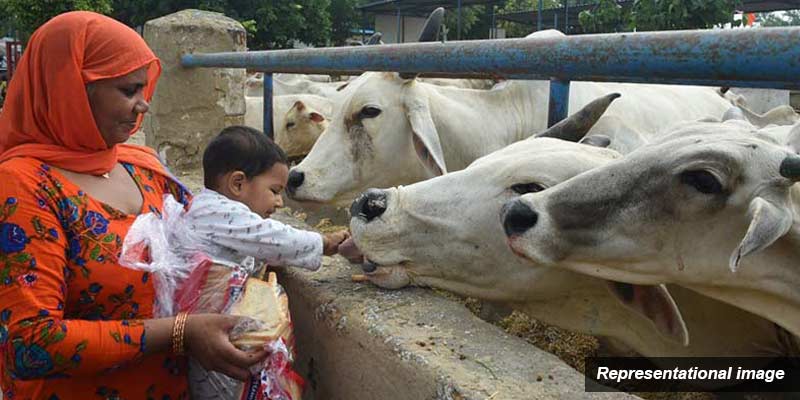- India
- Mar 20
Rashtriya Gokul Mission
• The Union Cabinet, chaired by PM Narendra Modi, approved the Revised Rashtriya Gokul Mission (RGM) to boost growth in the livestock sector.
• The revised RGM has an additional outlay of Rs 1,000 crore. With this the total outlay is Rs 3,400 crore during 15th Finance Commission cycle from 2021-22 to 2025-26.
Rashtriya Gokul Mission
• Rashtriya Gokul Mission was launched in December 2014 for development and conservation of indigenous bovine breeds in a scientific holistic manner.
• The scheme is important for upliftment of rural poor as more than 80 per cent low producing indigenous animals are with small and marginal farmers and landless labourers.
• The scheme has been playing an important role in enhancing milk production and productivity of bovines to meet growing demand of milk and making dairying more remunerative to the rural farmers of the country.
Objectives of the scheme:
i) To enhance productivity of bovines and increase milk production in a sustainable manner using advanced technologies.
ii) To propagate use of high genetic merit bulls for breeding purposes.
iii) To enhance artificial insemination coverage through strengthening breeding network and delivery of artificial insemination services at farmers’ doorstep.
iv) To promote indigenous cattle & buffalo rearing and conservation in a scientific and holistic manner.
Achievements of Rashtriya Gokul Mission
• With the implementation of the Rashtriya Gokul Mission (RGM) and other efforts of the government, milk production has increased by 63.55 per cent in the last 10 years, along with the availability of milk per person, which was 307 grams per day in 2013-14, has increased to 471 grams per day in 2023-24.
• Productivity has also increased by 26.34 per cent in the last 10 years.
• The Nationwide Artificial Insemination Programme (NAIP) under the RGM provides free of cost artificial insemination at the farmer’s doorstep in 605 districts across the country where the baseline artificial insemination coverage was below 50 per cent.
• Till date, over 8.39 crore animals have been covered and 5.21 crore farmers have been benefitted.
• RGM has also been at the forefront in bringing the latest technological interventions in breeding to the farmer’s doorstep.
• A total of 22 in vitro fertilization (IVF) labs have been set up across the country under the State Livestock Boards (SLBs) or in universities and over 2,541 high genetic merit (HGM) calves have been born.
• The scheme is set to significantly boost milk production and productivity, ultimately increasing farmers' incomes.
• It focuses on the protection and preservation of India’s indigenous bovine breeds through systematic and scientific efforts in bull production and the development of indigenous bovine genomic chips.
• Additionally, IVF has become an established technology, due to the initiatives taken under the scheme. This initiative will not only enhance productivity but also improve livelihoods of 8.5 crore farmers engaged in dairying.
Revised Rashtriya Gokul Mission (RGM)
Two new activities have been added under the revised scheme.
a) One-time assistance of 35 per cent of the capital cost for establishment of Heifer Rearing Centres to Implementing Agencies for creation of 30 housing facilities having a total of 15,000 heifers.
b) Encourage farmers to purchase high genetic merit (HGM) IVF heifers to provide 3 per cent interest subvention on loan taken by the farmer from milk unions/financial institutions/ banks. This will help in systemic induction of high-yielding breeds.
Manorama Yearbook app is now available on Google Play Store and iOS App Store

